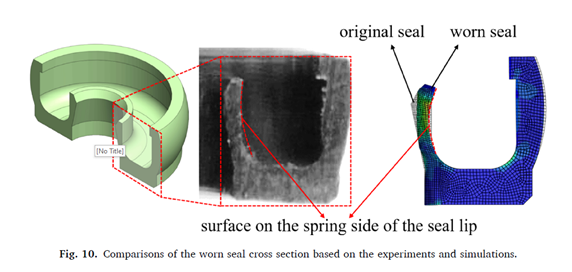With our collaboration with National Taiwan University, we are happy to share with our research article on the Wear and leakage assessments of canted coil Spring–Energized polytetrafluoroethylene seals under Ultra-High cycle operations.
Highlights
- • Compressive responses of canted coil spring and spring ring are well predicted.
- • Wear of spring-energized PTFE seals under ultra-high cycle operations is assessed.
- • Simulated worn seal cross section is in fair agreement with the measured one.
- • Sealing capability is evaluated via Reynolds equation and successfully validated.
Abstract
Spring-energized polytetrafluoroethylene (PTFE) seals are typically utilized to meet requirements of long service life due to their excellent temperature and chemical resistance. After high-cycle operations, the contact pressure between the seal lip and the associated counterpart possibly decrease because of the wear on the contact surface and this eventually leads to loss of the sealing capability. Evaluations of the wear and resulting sealing performance of the seal are rather essential, however, the corresponding experiments are generally time consuming and costly. Simulation procedures for the seal based on the finite element analysis were therefore developed in the current study. Experimental and numerical investigations of mechanical behaviors of the canted coil spring and PTFE materials were first performed. A wear analysis model for the spring-energized PTFE seal used in a glue dispenser with reciprocating motions for semiconductor equipment was subsequently constructed. The modified Archard model was implemented into a self-coded user subroutine of commercial finite element software to assess the amount of wear on the seal. Simulation results revealed that the geometry dimensions of the worn seal are in fair agreement with those of the corresponding samples. Contact pressure distributions of the seal lip were also examined during the operations. Peak of the contact pressure was found to gradually decrease along with the increase of cycles due to the wear, and potential fluid leakage was then assessed via the Reynolds equation. Numerical calculations showed that no leakage would occur after ultra-high cycle operations which was consistent with practical observations.

Full article & Citation at: https://www.sciencedirect.com/science/article/abs/pii/S135063072200084X?via%3Dihub






